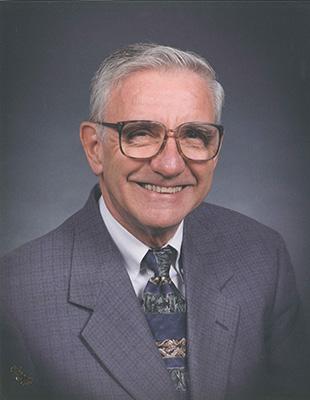 Donald Sands was born in Leominster, MA and did his undergraduate work at nearby Worcester Polytechnic Institute. He then went on to Cornell University where he completed a Ph.D. in 1955 after having worked in chemical crystallography under the direction of J. Lynn Hoard.. One of Don’s papers with Hoard, “The Structure of Tetragonal Boron”, became a classic; a few months later Linus Pauling wrote to Hoard saying:
Donald Sands was born in Leominster, MA and did his undergraduate work at nearby Worcester Polytechnic Institute. He then went on to Cornell University where he completed a Ph.D. in 1955 after having worked in chemical crystallography under the direction of J. Lynn Hoard.. One of Don’s papers with Hoard, “The Structure of Tetragonal Boron”, became a classic; a few months later Linus Pauling wrote to Hoard saying:
"I have just been reading, for the second time, your paper on tetragonal boron and I am writing primarily to tell you my opinion of it. I think that it is one of the best crystal-structure determinations that has ever been made. Also, I am pleased with the excellent writing in this paper. Too often scientific papers are written in a discouragingly dull way."
While at Cornell Don also met his future wife Betty, to whom he has been married for 60 years.
Don’s first professional position was as a Senior Chemist at Lawrence Livermore Laboratory in California. After having worked on the structures of boron allotropes in graduate school he studied inorganic borides and beryllides at the California lab. While Don’s work was primarily scientific and led to many publications, the Lawrence lab at that time had strong interests in nuclear-weapons research. That emphasis eventually led Don to look for a position elsewhere.
Don joined the University of Kentucky as an Assistant Professor in 1962; he was a full professor by 1968. In Lexington he did not at first have access to the kind of equipment he had used previously but he collaborated with Paul Sears and Bill Wagner and eventually there was a working lab and steady stream of publications and students. One of his early papers, on the structure of the disordered monoclinic polymorph of sulfur (1965), is well known still because the solid-state orthorhombic-monoclinic phase transition of sulfur is so often discussed in undergraduate physical chemistry courses.
Among his colleagues in the Chemistry Department Don became known as the guru of Physical Chemistry. He worked the problems in textbooks for relaxation and could (unlike the rest of us) solve them all – and make doing so look simple. His students admired him for his orderly lectures and fair exams, his dry wit, and his concern for their welfare.
Don’s interest in teaching led to a very successful book, Introduction to Crystallography, (1969; 1993; Spanish edition in 1974).
Don also enjoyed, and was very good at, more formal mathematics. His first paper in that area, “Transformations of Variance-Covariance Tensors” was published in 1966; eventually there was a well-received book (The Vectors and Tensors of Crystallography, 1982) and a section (“Distances, Angles, and their Standard Uncertainties”) in The International Tables for Crystallography (1993 through the current 2010 edition).
Being smart, thoughtful, witty, and good with both numbers and words, Don’s eventual move into university administration was a near certainty. Over the years he served as Department Chair, Associate Dean, Acting Dean, and Vice Chancellor for Academic Affairs. He spent two years at the National Science Foundation as Section Head of the Division of Teacher Preparation and Enhancement.
Don retired formally in 1999 and so had more time to play chess, but he remained active in a variety of projects. One of the most notable was teaching physical chemistry to a young inmate of the federal prison in Lexington. That student eventually completed his sentence and went on to graduate from the University of Kentucky as a chemistry major and to do well in a graduate program elsewhere. Don also took on more formal roles, such as Acting Director of the University of Kentucky Art Museum in 2001, and Board Member and then Chair (1999) of the Central Kentucky Civil Liberties Union (ACLU – KY). The latter group honored Don with its Thomas L. Hogan Award in November 2015.
Don and Betty’s two children are both graduates of the University of Kentucky. Many of his colleagues enjoyed teaching Carolyn, a chemistry major. Stephen studied civil engineering.
Don has been a central, if quiet, presence at the University of Kentucky and around Lexington for over fifty years. His influence is perhaps mostly strongly felt in how things are done, or at least how we think they ought to be done. He could take strong, principled positions (as Dean he was known to ask professors who had cancelled class when they were going to make up the time students had paid for) but he always listened and always considered all the circumstances. Back in the years when various forms of discrimination were acceptable to many they were never acceptable to him.
We thank Don for enriching our lives and showing us the way.
Written by: Prof. Carolyn Brock
